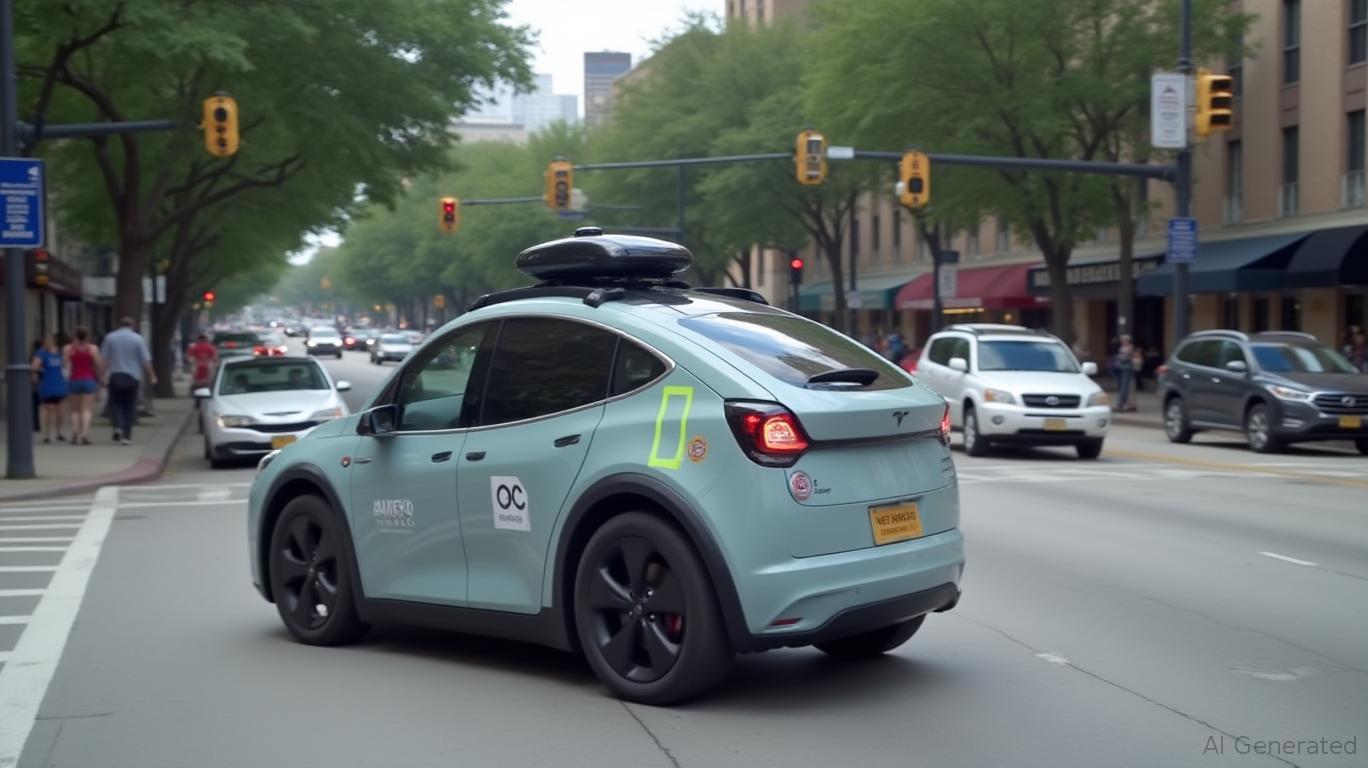Tesla's Autonomous Ambition: Navigating Regulatory Risks for Market Dominance
The race to dominate autonomous vehicle (AV) technology has intensified, with Tesla's robotaxi plans at the center of federal scrutiny and state-level debates. As the company pushes to deploy its fleet by summer 2025, investors must weigh the regulatory hurdles against Tesla's potential to solidify its lead in the $1.5 trillion AV market. Here's how the stakes—and opportunities—are shaping up.

The Regulatory Crossroads
Tesla's robotaxi rollout faces dual challenges: federal investigations into safety flaws and state-level requirements that could delay or limit its expansion. The National Highway Traffic Safety Administration (NHTSA) has launched probes into Tesla's Full Self-Driving (FSD) software after incidents in Austin highlighted erratic behaviors, such as sudden braking and lane deviations. A May 2024 letter from NHTSA demanded detailed explanations of how
evaluates safety in low-visibility conditions—a critical test for urban deployment.Meanwhile, Texas lawmakers have urged Tesla to delay its launch until September 2025, when new state laws requiring DMV approvals and emergency response protocols take effect. This delay could buy Tesla time to address safety concerns but risks ceding momentum to rivals like Waymo, which already operates in Phoenix with a proven safety record.
Investors have bet heavily on Tesla's autonomy ambitions, with shares rising 35% since early 2023 amid regulatory updates. However, the stock remains volatile—falling 12% in May 2024 after NHTSA's safety probe announcement—highlighting how regulatory outcomes could swing valuation.
Competitors on the Move
Tesla's rivals are leveraging federal reforms to accelerate their own plans. The NHTSA's new exemption process, allowing up to 2,500 robotaxis annually, has cleared paths for GM and Ford to launch fully autonomous shuttles by 2026. Unlike Tesla, these companies are designing vehicles without steering wheels, betting on sensor-heavy systems (e.g., GM's Cruise) to outperform Tesla's camera-only approach.
This divergence raises a critical question: Can Tesla's simplified design—retaining manual controls for certification—sustain safety in complex urban environments? Analysts note that Waymo's Lidar-equipped vehicles have logged millions of incident-free miles, while Tesla's 562-mile testing total in California since 2016 underscores its reliance on less-regulated states.
The Long Game: Market Dominance or Regulatory Detour?
Tesla's advantage lies in its existing infrastructure and brand loyalty. Its electric vehicle (EV) sales network and over-the-air software updates could create a moat for robotaxi adoption. However, the company's history of aggressive timelines—Musk's 2019 promise of “fully autonomous” by 2020 still unfulfilled—fuels skepticism.
The Autonomous Vehicle Acceleration Act of 2025, proposed by Senator Cynthia Lummis, could ease Tesla's path by modernizing safety standards and harmonizing state rules. Conversely, a House proposal to preempt state AI regulations for a decade risks backlash from governors, creating uncertainty for Tesla's expansion into new markets.
Waymo's 50 million miles of testing dwarf Tesla's minimal efforts, suggesting a gap in real-world readiness. Yet Tesla's cost advantage—Model Y robotaxis priced at $40,000 vs. Waymo's $100,000 shuttles—could drive adoption in price-sensitive markets.
Investment Takeaways
Risk Factors to Monitor:
1. NHTSA's FSD Probe: A finding of safety defects could delay deployments or force costly software revisions.
2. State Pushback: Laws in California and New York mandating human drivers could limit Tesla's operating areas.
3. Safety Performance: Public perception will hinge on incidents like Austin's reported “wrong-way” driving.
Why Tesla Could Still Win:
- First-mover advantage in Texas and other deregulated markets.
- Scalability via its global EV network and software-as-a-service model.
- Musk's ability to pivot strategies, as seen with the recent manual-control compromise for certification.
Final Analysis
Tesla's robotaxi strategy is a high-risk, high-reward play. While regulatory and safety hurdles could derail its timeline, the company's brand power and cost efficiency position it to capture a significant slice of the AV market—if it can navigate the scrutiny. Investors should prioritize two metrics:
1. Regulatory clarity: Track NHTSA's findings and legislative progress on federal preemption.
2. Safety milestones: Watch for incident-free miles and state approvals post-September 2025.
For now, Tesla remains a speculative bet, best suited for portfolios with a tolerance for volatility. A “wait-and-see” approach until the first half of 2026—when key safety data and regulatory decisions materialize—could yield better entry points.
In the AV race, Tesla's ambition is undeniable. The question remains: Will regulators let it win?

Comments
No comments yet